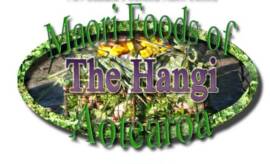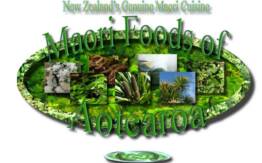Recipes for
Fauna & Flora Dishes
Nga kai mo te teepu
The Kotero - staple food easily made but the end product is very pungent, available to the community used in Maungapohatu in the Bay of Plenty during earlier part of 1900's during the reign of Rua Kenana. Kotero rua taewa and kumara was used as a food source. It was fermented and cooked in the ovens during those times though rarely enjoyed it offered a food source in which they survived.
Rarauwhe / Aruhe (fern root)
While horticulture provided some of the carbohydrate requirements of Māori, it was supplemented by aruhe (fern root), the edible root of the bracken fern. Digging up aruhe is back-breaking labour, but the root was widely available, and once preserved could last almost indefinitely. Its status as a staple was underlined by a proverb about aruhe, ‘Te tūtanga tē unuhia’ (the food portion that is always present).
It grows in most place across New Zealand and because of this it was a food source.
Kia ora, you are the visitor to this page

Copyright © 2000 Epuro Hands International Limited



Fauna & Flora Dishes
The Kotero - staple food easily made but the end product is very pungent, available to the community used in Maungapohatu in the Bay of Plenty during earlier part of 1900's during the reign of Rua Kenana. Kotero rua taewa and kumara was used as a food source. It was fermented and cooked in the ovens during those times though rarely enjoyed it offered a food source in which they survived.
Rarauwhe / Aruhe (fern root)
While horticulture provided some of the carbohydrate requirements of Māori, it was supplemented by aruhe (fern root), the edible root of the bracken fern. Digging up aruhe is back-breaking labour, but the root was widely available, and once preserved could last almost indefinitely. Its status as a staple was underlined by a proverb about aruhe, ‘Te tūtanga tē unuhia’ (the food portion that is always present).
It grows in most place across New Zealand and because of this it was a food source.
Native Ingredients
The Kotero - staple food easily made but the end product is very pungent, available to the community used in Maungapohatu in the Bay of Plenty during earlier part of 1900's during the reign of Rua Kenana. Kotero rua taewa and kumara was used as a food source. It was fermented and cooked in the ovens during those times though rarely enjoyed it offered a food source in which they survived.
Rarauwhe / Aruhe (fern root)
While horticulture provided some of the carbohydrate requirements of Māori, it was supplemented by aruhe (fern root), the edible root of the bracken fern. Digging up aruhe is back-breaking labour, but the root was widely available, and once preserved could last almost indefinitely. Its status as a staple was underlined by a proverb about aruhe, ‘Te tūtanga tē unuhia’ (the food portion that is always present).
It grows in most place across New Zealand and because of this it was a food source.
